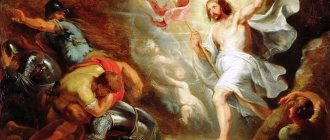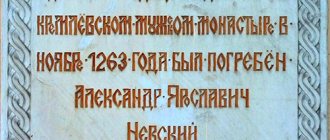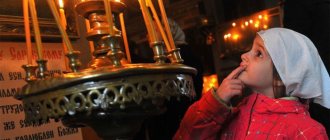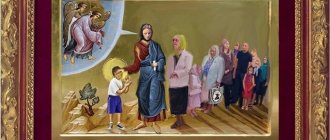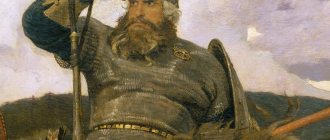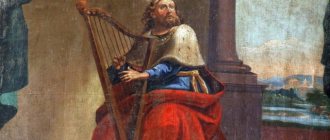There are some terms whose meaning can vary greatly. Moreover, this can happen not only because of the context, but also because of several semantic connotations that these terms have. In order not to look stupid in a given situation, people try to study such words. However, there are times when a person is unable to understand the essence of a certain concept. For example, many people do not know what Golgotha is. And if anyone understands that this is a mountain in Jerusalem, he has absolutely no idea what other meaning this word carries. To shed light on the mystery of the concept of “Golgotha”, we will plunge into the history of the origin of Christianity.
Mount Golgotha
From Hebrew, the word “Golgotha” means “place of the forehead.” In other words, the territory where people were executed. In Christianity, this term represents one of the most important shrines and places of worship of all Christians. According to legends, Golgotha is the name of the mountain on which Jesus Christ was crucified.
Thus, this place is the personification of the end of the earthly life of the son of God and the beginning of his heavenly stay until the Last Judgment.
Golgotha, as the site of Jesus' crucifixion, plays a fairly important role in history. It should be remembered that important or even turning-point historical events took place at this place. It is not known exactly what happened at Golgotha, apart from the classical version of events. Therefore, at present, all events from the life of Jesus Christ are subject to comprehensive study in order to shed the light of truth on them.
CALVARY
[Greek Γολγοθᾶ], the place in Jerusalem where Jesus Christ was crucified (John 19. 17-42). Greek the term "G." conveys to Aram. , which dates back to Hebrew. - skull, head (2 Kings 9.35; Judges 9.53). In the Gospels, this name was interpreted as “place of the Skull” (Greek τόπος κρανίου; Latin Calvariae locum - place of the skull (Matthew 27.33; Mark 15.22; Luke 23.33; John 19.17)). The exact origin of the name of this place is not established; blzh. Jerome believed that it comes from the name of the place where criminals were beheaded (Hieron. In Math. 27 // PL. 26. Col. 209).
Glorification of the Cross. Reverse side of the icon “Savior Not Made by Hands”. 2nd half XII century (Tretyakov Gallery) Glorification of the Cross. Reverse side of the icon “Savior Not Made by Hands”. 2nd half XII century (TG) The NT says that “the place where Jesus was crucified was not far from the city” (John 19.20; cf. Heb. 13.12). Here “there was a garden, and in the garden a new tomb, in which no one had ever been laid” (John 19:41). This tomb belonged to the rights. Joseph of Arimathea (Matthew 27.59-60). Perhaps G. originally called not only the revered place where the Cross stood, on which the Lord was crucified, but also the entire rocky area outside the wall of Jerusalem. Modern English researcher J. Taylor believes that in the process of creating the Church of the Holy Sepulcher, a toponymic shift occurred: the name of the vast area that served as the place of executions received a more specific meaning, being assigned to a small rocky outcrop inside the Church of the Holy Sepulcher. It is here, since the era of St. Equal-to-the-Apostles Constantine and Helena indicates the place of G. church tradition.
Modern location of the complex of the Church of the Holy Sepulcher and G. in the center of St. The city is the result of the redevelopment of Jerusalem in Rome. era: soon after the crucifixion of the Savior, Greece found itself inside the city wall built by Herod Agrippa I (40-44). After the destruction of Jerusalem, imp. Titus in 70, and then Hadrian in 135 New Rome. The city of Aelia Capitolina (Colonia Aelia Capitolina) was built further to the north, i.e. G.'s place turned out to be not just in the city, but in the center of its new layout.
Archaeological excavations 2nd half. XX century and other studies in the area of the Church of the Holy Sepulcher and in the surrounding areas of the city (Muristan) made it possible to significantly clarify the topography and morphology of the G. region (Kenyon. 1974; Lux. 1972; Corbo. 1981-1982). Excavations of the 60-80s. near G. it was established that until the end. I century according to R.H. there were no residential buildings in her area, from the 7th century. BC, the slope of the Gariv hill, to which G. belongs, served as a huge quarry. The quarries of these developments occupy the entire site of the Church of the Holy Sepulcher and Muristan. In the 1st century BC, mining stopped and the landscape of the area was leveled by adding soil, including into the caverns of the quarries. The bulk soil was cultivated by laying out a garden on it (these areas were interspersed with bare rock), the level of which approximately coincides with the level of the modern floor. basilicas (approx. 10 m below the original line of the mountain slope, approximately 760 m above sea level). The garden was bordered by rocks, especially high in the west and south, and in the west. At least 2 tombs were carved into the rock: one with an arcosolium (the tomb of the Savior), the other with niches of the “kokkim” type (known as the “tomb of Joseph of Arimathea”). East and south the sides retained a connection with the mountainside, with the rock in the south rising above the garden in the form of a peak - a place now identified as G.
Location of Golgotha in the complex of the Church of the Holy Sepulcher in the 6th century. (Reconstruction)
Location of Golgotha in the complex of the Church of the Holy Sepulcher in the 6th century. (Reconstruction) During the construction of Rome. The city garden and adjacent stone ridges were again covered with a large layer of soil, raising the level to the original slope level and creating a kind of artificial platform on which the Capitol was erected. According to Eusebius of Caesarea, the tomb of the Savior, located next to G., was filled up during the construction of a pagan temple (Euseb. Vita Const. III 26). Blzh. Jerome reports that at the site of the Savior’s crucifixion under the Emperor. A statue of Venus was erected to Adriana (Hieron. Ep. Paul. 58. 3 // PL. 22. Col. 581).
Excavations record many elements associated with the organization of the temenos of the Capitol of the imperial era. Adrian, its demolition and construction of the complex from the imperial era. Constantine (Corbo. Vol. 1. P. 33-37; Vol. 2. Table 28; Vol. 3. Photos). Findings of objects related to pagan cults make it possible to localize a small sanctuary at the Temple of Venus in G.: to the east of the G. rock, an imp. coin was found in a building bedding. Heliogabala, small altar for libations, head of women. clay figurines, clay fish, etc. - this backfill apparently dates back to the time of the destruction of the pagan sanctuary.
G. was dug up again and became an object of veneration under the emperor. Constantine I the Great. Under the control of St. Makaria, bishop Jerusalem, in 325. The Capitoline Temple and the temenos (sacred site) were demolished, their remains were removed, and the garden terrace with monuments of evangelical events was architecturally decorated. In the rocky section of the slope from the west, 2 ancient tombs were discovered, and to the south. On the side above the common surface, rock G protruded. In order to isolate the tomb of Christ, it was separated from the massif of rock from the west and north, surrounded by the rotunda of the Church of the Resurrection and the building of the bishopric of Jerusalem was built nearby; the remaining hills from the east and south were undercut, creating a kind of 4-sided pylons (Corbo. Vol. 2. Fig. 41).
As a result, the general topography of this area during imp. Constantine the Great changed significantly: G. began to rise like a lonely cliff against the backdrop of the walls of the grandiose basilica and was visible from the south. and east sides of the triportic (inner courtyard of the basilica, surrounded on 3 sides by a colonnade). The basilica was named Martyrium (“place of testimony”). The pilgrim Egeria (late 4th century) writes about “a large church called Martyrium... because it is located on Golgotha, that is, beyond the Cross, where the Lord suffered” (Eger. Itiner. 30. 1). Excavations have shown that the app. south wall The nave of the Martyrium blocked direct access to the rock of G. The builders surrounded the free-standing G. with round or polygonal masonry, along the line of which they placed a fence covered with gold and silver, mentioned by pilgrims (they used one of the walls from the era of Emperor Hadrian, to -raya ensured the stability of the rock). According to the Jerusalem Breviary (beginning of the 6th century), a golden cross decorated with precious stones (Brev. Hieros. 2), donated by the Byzantine people, was erected on the top of the rock. imp. Theodosius II c. 427 (Theoph. Chron. P. 86).
Changes in the shape of the G. rock from the 4th to the 20th centuries. was associated with its veneration and symbolic design: stones of different sizes were chipped from it and taken as relics (in the Church of the Virgin Mary on Mount Gerizim, 5th-6th centuries, a piece of stone was found with the inscription: “From the Rock of St. Calvary”). The top of the rock served to strengthen crucifixes on it - there is, for example, a depression here, interpreted as the place where the Life-Giving Cross stood. Earlier than the 11th century. pilgrims do not mention it, pointing at the same time, like the Pilgrim from Piacenza (c. 570), to the hole at the foot (Anton. Placent. Itinerarium. 19). Apparently, a gold cross was attached to the hole, which stood until the sack of the city by the Persians in 614, and then was replaced by a silver one (it disappeared during the destruction of the Church of the Holy Sepulcher by al-Hakim). Thanks to the efforts of pilgrims, the hole widened: given by Russian. abbot. Daniel (beginning of the 12th century) its size is approx. 38-46×19-27 cm, present time 50 cm in diameter and 40 cm in depth. No holes from the crosses of thieves crucified with Christ were found on the rock, and in modern times. state of the peak there is no place for them (pilgrims were looking for them already in the early Byzantine era, but there is not a single mention of their existence).
The ascent to the top of G. was carried out along steps, possibly hewn out of the rock itself: Egeria writes about the movement of pilgrims “before the Cross” and “after the Cross”; the steps leading up are mentioned in the 6th century. Theodosius (c. 530) (Theodos. De situ Terrae Sanctae. 7) and the Pilgrim from Piacenza (Anton. Placent. Itinerarium. 19). V.K. Corbo writes that during excavations undertaken by the Jerusalem Patriarchate in the end. XX century, in the north. Parts of the rock reveal the remains of steps up the slope, but the time of their appearance is unknown. Igum. Daniil noted that under the emperor. Constantine IX Monomakh, the floor in the upper church of G. was paved with beautiful colored marble; This is generally confirmed by Theodoric (1172); most likely preparation for paving in the 11th century. preserved in the north. and zap. on the sides of the rock G. in the form of a platform (or the top of steps), paved with small stones; the rest of the column of the altar barrier is built into its edge; the slabs could be placed in the gap of the edge of the rock; in the upper of the 2 preserved layers of plaster (white and brown), a deepening of the socket of a column or pilaster is noticeable.
Until the Persians. During the conquest of 614, the G. rock was located outside the church buildings. It became part of the Church of the Holy Sepulcher during the reconstruction undertaken by St. Modestus (locum tenens in 614-628, Patriarch of Jerusalem in 630-634). A tall and richly decorated “Church of Golgotha” was built here, described by Arculf (c. 670) as 4-cornered, from the east. on the side it was connected to the Martyrium (Adamn. De locis sanctis. V 1).
Orthodox throne over the site of the Crucifixion
Orthodox throne over the site of the Crucifixion Archaeological excavations carried out from the east. sides showed that the original rock was covered with an architectural “case”. Church of the era of St. Modesta was round or multifaceted; the number of inputs is not established. Four pilasters (possibly earlier than the 7th century), standing almost close to the rock, and a room that arose to the east of the rock have been preserved. At the same time, a vaulted 4-pillar ciborium was built above the city. The temple was small in area (3.5-4.5 m between pilasters), but significant in height (4 m above the top of the rock). Arculf mentions a large bronze horos and a huge silver cross placed here, which stood 9-10 m above the paving of the courtyard, and the impression of height was enhanced by a small base (Ibid. V 1).
After the works of the 11th century. and the restructuring of the Crusader era, Georgia took on a form that has not changed significantly until the present day. time: its east was significantly developed. and zap. parts. The entrance to the temple was through an external flight of stairs and the “Chapel of the Franks” (modern Chapel of the Clothes); Later, 2 flights of stairs were added from the west, making it easy to organize the movement of pilgrims. In order to connect G. with the Holy Sepulcher into one church and include it in the general ensemble, a 2-story chapel was built to the east. half of the south wings of the transept with 4 traves and cross vaults. This architectural design of the G. chapel has been preserved, but only one fragment on the vault (the composition “Ascension of the Lord”) and the dedicatory inscription of 1149 on the facade have survived from the mosaics. Now the pilgrim, having arrived at the Church of the Holy Sepulcher, could, moving from chapel to chapel, reach G. and leave here as evidence of the completion of the pilgrimage the cross that he carried with him during the journey. Theodoric (1172) claims that he saw many crosses in Greece brought by pilgrims; the guards of Greece burned them on Easter evening.
Catholic chapel "Nailing to the Cross"
Catholic chapel “Nailing to the Cross” Modern. G. acquired its appearance as a result of the general renovation of the Church of the Holy Sepulcher after the fire of 1808. Apart from the external staircase from the street, the structure leading to the Catholic Church is practically not used. Chapel of the Removal of the Robes (10th stop of the Catholic Way of the Cross), 2 staircases go up: the right one, immediately from the doors of the temple, and the left one, from the side of the Catholicon (built in 1810). G.'s temple is divided by massive columns into 2 aisles: orthodox. (left) and Catholic. (right). Mainly Orthodox. in the aisle above the place where the Holy Cross was erected, a white marble throne with pink marble pilasters was built. The hole where the Cross was installed is framed by a silver circle. To the right and left of the throne in the glazed openings one can see the gray stone surface of G. and a crack that passed through the entire rock as a result of the earthquake at the time of the Savior’s death (Matt. 27.51). Behind the throne is a tall Crucifix with the upcoming Most Holy. Mother of God and St. John the Theologian.
Research in 1988, when the marble cladding of 1810 was removed from the top of the rock, showed that G. is a narrow ledge of rock, raised several times in height above the surrounding surface. meters (12.75 m from the east, 8.97 m from the north, 5 m from the west), and its top is pointed. The rock consists of light-colored limestone with red veins (with layers of “royal stone”), medieval. pilgrims describe them as traces of the blood of Christ flowing from a rock onto the skull of Adam. A significant part of G. stands above a mined-out quarry and is almost empty from the inside.
Right Franciscan chapel, 11th stop Catholic. Way of the Cross, was restored in 1937 according to an Italian design. architect A. Barluzzi. On the walls of the chapel there are mosaics “Nailing to the Cross” and “Sacrifice of Abraham”. The silver altar with the composition “Nailing to the Cross” (master D. Portigiani) was donated in 1588 by the Tuscan Hertz. Ferdinando Medici. To his left, under the arch separating the Catholic. part of G. from the Orthodox, there is a small Franciscan throne of the Virgin of Sorrows (Stabat Mater). Behind the throne is a sculptural image of the Mother of God, pierced with a sword (according to the prediction of the right. Simeon the God-Receiver: “... and a weapon will pierce your own soul” (Luke 2.35)). The sculpture is a donation from the Portuguese. cor. Maria I of Braganza (1778).
Chapel of the Head of Adam
Chapel of the Head of Adam
Chapel of the Head of Adam is located on the lower level of the temple, under the Orthodox church. throne of G. According to ancient Christ. traditions, the Crucifixion of the Savior took place at the burial place of Adam. This is a legend that can be traced from the end. IV century, was already known to Origen (c. 185-254) (Orig. Comm. In Matth. 27. 3 // GCS. Bd. 38. Tl. 2. S. 265. 3) and is found among other fathers Churches. Thus, Epiphanius of Cyprus (c. 315-403) wrote that Christ washed and cleansed the bones of our forefather with His blood (Epiph. Adv. haer. 26.5), and the blessed one mentioned this. Jerome (Hieron. Ep. 46 (44) // PL. 22. Col. 484 sq.). At the same time, the plot “The Resurrection of Adam” (Bagatti. 1977) appeared in iconography. Through a glass window in the depths of the chapel one can see a crevice through which a stream of Christ's blood reached Adam's skull.
It has been archaeologically established that a small depression in the rock of G., revered as the “grave of Adam”, in the era of the imp. Hadrian was closed by a supporting wall and could not serve as an object of worship in the 2nd - beginning. IV century Builders of the Imperial era. Constantine the Great, the wall was dismantled 70 cm lower than the modern one. the floor of the cave, but it was not designed architecturally (the backfill of the cave faced it on the untreated side). In written sources, the Adam's Chapel at the foot of the rock has been mentioned since the 7th century. The cave was carved out artificially; Corbo's opinion that it was part of the Temple of Venus was not confirmed archaeologically: the entrance to the cave was cut through the supporting masonry of the imperial era. Constantine, it is not plastered inside and does not have early Christian graffiti. era.
Crucifixion of Christ and two thieves. Miniature from the Khludov Psalter (State Historical Museum. Greek. 129d. L. 45 vol.)
Crucifixion of Christ and two thieves. Miniature from the Khludov Psalter (State Historical Museum. Greek. 129d. L. 45 vol.) Decoration of the cave as St. places through the efforts of St. Modest, Patriarch of Jerusalem, may have occurred after 614; Early Byzantine the silver screen was stolen in 614, which allowed Patriarch Modestus to dismantle the bypass masonry of the imp. Constantine during the construction of the “Temple of Golgotha” and to expand the “Adam’s Cave”. It acquired dimensions of 2 m (height) × 1.5 m (width) - the minimum sufficient for conducting a church service, so even the bodies of the deceased were left outside during the funeral service, without being brought into the cave. Under the Crusaders, the Adam Chapel was expanded from the east and a tomb for armor was built here. kings of Jerusalem. This necropolis was dismantled during the restoration of N. Komnenos after the fire of 1808 (the tomb of Cor. Baldwin V is kept in the Museum of the Greek Orthodox Patriarchate in Jerusalem). In 2004, a throne was installed in the chapel in the name of St. John the Baptist.
In the early Byzantine period. period, the elements of the “sacral topography” of the G. site were gradually supplemented and developed. The idea of \u200b\u200bthe burial of Adam on G. had a deep meaning for Christians: thanks to it, many were associated with the complex of the Holy Sepulcher. motives of the OT, including the sacrifice of rights. Abraham. In the VI century. on the side, at the foot of the G., the “altar of Abraham” was made of stones, described by Theodosius (Theodos. De situ Terrae Sanctae. 7), the Pilgrim from Piacenza (Anton. Placent. Itinerarium. 19) and Arculf (Adamn. De locis sanctis. V 1).
Iconography G.
The iconography of G. is extensive, because it is inseparable from the iconography of the Life-giving Cross of the Lord. The oldest images and symbols of Greece date back to the 4th-5th centuries. Mosaic 5th century in c. Santa Pudenziana shows G. as a rounded rocky peak, topped with a golden cross. More traditionally, the image of G. is in the form of a platform, on which steps lead from 2 sides: to the Byzantine. coins (for example, Emperor Theodosius II and Eudokia, 420) - from 1 to 4 steps (DACL. Col. 3096), on pilgrimage ampoules and flasks - usually 2-3 steps (for example, on flasks from Monza and Bobbio, 5th century, museum Studium Biblicum Franciscanum - see: Barag. 1970). This is probably a reflection of the actual design of the city, with steps leading to the top, which became known thanks to the iconography and descriptions of pilgrims. In other cases, G. is presented conventionally, in the form of a point or triangle under a cross (for example, an ampoule from the State Museum of Württemberg, Stuttgart; the lid of a reliquary, Vatican Museums).
In icon painting and book miniatures, G. is depicted in accordance with the Gospels as a small mountain with a rounded or sharp top, crowned with a cross (for example, the Khludov Psalter, 9th century - GIM. Greek. 129 d. L. 4, 19, 67, 86 , 98 vol.; Kiev Psalter, 1397 - RNL. OLDP. F. 6. L. 47 vol.). Usually the shape of the mountain is close to triangular, sometimes with pronounced steps on the slopes or with the head of Adam lying under it (Khludov Psalter. L. 72 vol.), the edge can be depicted in a cave-rift (Kiev Psalter. L. 36, 92 vol. ., 101, 185). In the case when it was necessary to depict 3 crosses, the G. could also have 3 vertices (Khludov Psalter. L. 45 vol.). In later iconography, G. with Adam's head often served as a symbol of death (for example, on tombstones of the 18th-20th centuries).
In accordance with the apocryphal legends about Adam's head (the blood from the wounds of Christ touched the head and washed away Adam's sin), streams of blood are depicted pouring onto Adam's skull (mosaic of the cathedral of the Nea Moni monastery on the island of Chios, 1042-1056). Images of G. in Byzantium. and Old Russian monuments are often accompanied by letters, the number of which can be more than 100. In Russian. In images, more often than not, M. L. R. B. is found, meaning “place of frontal paradise.”
In Europe In painting, starting from the late Middle Ages, the image of Greece as a vast rocky landscape spread, allowing numerous characters from the composition to be placed on the plot of the Passion of the Lord.
Source: Itineraria et alia Geographica. Turnhout, 1965. (CCSL; Vol. 175).
Lit.: [Shik K.] Schick’s opinion about Golgotha // SIPPO. 1893. [T. 4]. Aug. pp. 392-401; Ainalov D.V. Golgotha and the Cross on a mosaic of the 4th century. // Ibid. 1894. [T. 5]. Feb. pp. 80-104; aka. Details of Palestinian architecture and topography on Christian monuments. art: Calvary ladder and the altar of Abraham; Holy Sepulcher and Garden of Gethsemane; Jerusalem Temple in the mosaic of S. Maria Maggiore in Rome // Ibid. 1895. [T. 6]. June. pp. 335-361; aka. Location of the main buildings of Constantine’s buildings according to written sources // Ibid. 1903. T. 14. Part 2. No. 2. P. 53-115; Jeremias J. Golgotha. Lpz., 1926; Lux V. Vorläufiger Bericht über die Ausgrabung unter der Erlöserkirche im Muristan in der Altstadt von Jerusalem in den Jahren 1970 and 1971 // ZDPV. 1972. Bd. 88. S. 185-201; Coüasnon Ch. The Church of the Holy Sepulchre. L., 1974; Kenyon K. Digging up Jerusalem. L., 1974; Hamrick EW The 3d Wall of Agrippa I // BiblArch. 1977. Vol. 40. P. 18-23; Corbo VC Il Santo Sepolcro di Gerusalemme. Jerusalem, 1981-1982. 3 vol. (SBF; 29); Gibson S., Taylor JE Beneath the Church of the Holy Sepulchre, Jerusalem: The Archeology and Early History of Traditional Golgotha. L., 1994; Taylor JE Golgotha: A Reconsideration of the Evidence for the Sites of Jesus' Crusification and Burial // NTS. 1998. Vol. 44. P. 180-203; Lisova N.N. Come and see: Testimonies of God on earth. M., 2000. P. 162-170; Rossbach H. Golgotha: Das vergessene christl. Hauptheiligtum. Oldenburg, 2002.
L. A. Belyaev
Historical location of the place
If we talk about Golgotha as the “place of execution” where Jesus Christ met his fate, then it must have real geographical coordinates. Considering the traditions of the 1st century AD then reigning in Jerusalem, Golgotha was located outside the city walls. This was done in order not to desecrate the sacred borders of the city with an unholy act (execution). Therefore, in the 1st century, Golgotha was located northwest of the city. Nowadays, the Church of the Holy Sepulcher is located on this site, located in the area of the old quarter of Jerusalem.
At the moment, this is, in fact, an ordinary building in which three Christian shrines are located: the Holy Sepulcher, Golgotha, and the Slab of Anointing. There are other versions of the historical location of Golgotha. Some scholars are confident that this place was located in the north of Jerusalem in close proximity to the Damascus Gate. There is a legend that Golgotha is the burial place of Adam himself, but no evidence has been found to support this.
Mount of Olives
Most often in the Gospel the Mount of Olives is mentioned - as an area closely connected with the earthly life of Jesus Christ. Here He loved to relax with His disciples after the day's sermon. Here he was captured by guards. And after His Resurrection, it was from here, from the top of the Mount of Olives, that Jesus Christ ascended to heaven. Why did this particular mountain become the site of such important events? To answer this, you first need to figure out where it is located and what it looks like.
In fact, the Mount of Olives is not a separate peak, but a short mountain ridge - a chain of several gently sloping mountains overgrown with trees, encircling Jerusalem from the east and protecting the city from the destructive neighborhood of the desert.
The peaks of the Olivet Ridge are separated from the city by the valley of the Kidron River. This part of Kidron is also called the Valley of Jehoshaphat - after the tomb of Jehoshaphat, the ruler of the kingdom of Judah, who lived several hundred years before the birth of Christ, is located here. On the slopes of the mountain adjacent to Kidron there is a huge cemetery, the oldest graves of which are about three thousand years old. Many people from different parts of the world came to Jerusalem shortly before their death specifically to be buried here, on the slope of the Mount of Olives. The fact is that it is from here, from the Valley of Jehoshaphat, that, according to the prophets, the resurrection of the dead will begin. Because it is here, on the Mount of Olives at the end of time, that the Second Coming of Jesus Christ will take place. The Lord will come to earth again in the same place where he said goodbye to His disciples and ascended to heaven. In the book of the Acts of the Holy Apostles it is described as follows: ...He was lifted up before their eyes, and a cloud took Him out of their sight. And when they looked at the sky, during His ascension, suddenly two men in white clothes appeared to them and said: Men of Galilee! Why are you standing and looking at the sky? This Jesus, who has ascended from you into heaven, will come in the same way as you saw Him ascending into heaven. Then they returned to Jerusalem from the mountain called Olivet, which is near Jerusalem, a Sabbath's journey away. (Acts 1:9–12)
But what kind of Sabbath route is this and how far is the Mount of Olives from Jerusalem? The Sabbath Way was the name in Israel for a thousand steps that pious Jews could take on the day of rest - the Sabbath. According to Jewish law, one day a week must be dedicated to God. On this day you cannot work or do anything at all, but you can only read the Bible and pray. But since a person has various urgent matters, the law allowed him to take a thousand steps on Saturday. It turns out that the Mount of Olives is located very close to Jerusalem, less than a kilometer from the city walls. Its slopes offer a magnificent view of the city. Jesus loved to sit here in the evenings and look at Jerusalem in the rays of the setting sun. From here, from Olivet, He made His royal entry into Jerusalem, when all the inhabitants of the city joyfully greeted Him and spread their clothes under the hooves of the colt on which He rode. And at the foot of the mountain the olive garden rustled with leaves, where Jesus and his disciples liked to stop for the night when leaving the city. Here, in the Garden of Gethsemane, he was betrayed by one of his disciples named Judas. He brought the guards with him and kissed Jesus so that they would understand who they should grab. From here He was taken away to torture and death. And from here, from the Mount of Olives, He ascended into heaven after His Resurrection from the dead.
Do you know that:
The western slopes facing Jerusalem were once home to many olive orchards, from which the mountain got its name. The fact is that “eleon” translated from Greek means “oil”. And the best vegetable oil in the world is made from the fruits of the olive tree - olives. That’s why the mountain is called Olivet.
The Olivet Ridge consists of three peaks.
The middle one is the highest, its height is 815 meters. It was from here that Jesus Christ ascended to heaven. Its name is Mount Ascension.
The northern peak is called the Little Galilee. On its slope there was an inn where visitors from Galilee stayed. And since all the apostles were Galileans, it is not surprising that this is where they often visited when they came to Jerusalem for the holidays.
The southern peak is called Mount Scandal. But in reality, no one got into trouble with anyone there. The Greek word "scandal" literally means temptation. This peak was named so because once the Israeli king Solomon violated the agreement with the God of Israel - not to worship foreign gods. He allowed his pagan wives to build temples here, erect idols and make sacrifices to them.
Another understanding of the word “Golgotha”
There is an expression: “everyone will ascend to Golgotha.” In the vastness of domestic countries, this expression has undergone slight changes and therefore sounds like this: “everyone carries his own cross.” Although these are two different sentences, the meaning is the same.
It must be remembered that Jesus sacrificed himself for the salvation of mankind. He preached love and mutual understanding, but his father is the ruler of heaven or God was angry with people, so we all carry our own cross in life, ascend to our own Golgotha. In this context, “Calvary” and “cross” represent problems, life’s troubles, personal suffering and other obstacles that prevent one from moving forward in life.
Many theologians interpret this judgment differently. In their opinion, those who are able to ascend to Golgotha are worthy of forgiveness and success in life. In other words, overcoming difficulties, we repeat the feat of Jesus and experience his suffering. Everyone will ascend to Calvary, because all people are God's creatures, just like Jesus himself. In recent history, the word “Golgotha” is used in other meanings, for example, to designate a place where a person has a very hard time.
Description of the Church of the Holy Sepulcher
The central facade is made in the Romanesque style. Initially, there were two portals 5 m high and 3 m wide. The left one is still in use, and the right one was blocked with stone during the period of Muslim rule of Jerusalem.
On the left side of the Holy Door you can see a column with a crevice formed by a lightning strike at the time of the Descent of the Holy Fire in 1580. That year he did not appear to the Armenian Patriarch, who by cunning acquired the right to conduct the liturgy of the Descent of the Holy Fire. He went down to the Orthodox who remained outside the walls of the temple. Since then, the Greek Orthodox Patriarch has the exclusive right to liturgy. Representatives of other faiths have the opportunity to be present at the Edicule.
Crack in a column, © Konstantin Pavlov
The bas-reliefs that once decorated the building are now on display in one of the museums in Jerusalem. A wooden staircase can be seen under the second floor window. The Armenian monks climbed along it so as not to pass through the Greek Orthodox territory to their part of the temple. And although it has not been used for its intended purpose for a long time, the rarity is not removed, in accordance with the ban on any changes without unanimous permission.
To the right of the entrance is the chapel of the Franks, below it is the chapel of Mary of Egypt, and to the right is the door leading to the chapel of the Apostle John. In the northeastern part of the square there is an entrance to Golgotha, in the east there is the monastery of Abraham, in the west there is the Church of St. James and the chapel of the Myrrh-Bearing Women. To the south of the Holy Court is the Gethsemane courtyard, which houses a special relic - the shroud of the Virgin Mary.
Holy Court, © Official website of the Patriarchate of Jerusalem
Norilsk Golgotha
Very often the term “Golgotha” is used to describe places where a person is subjected to inhuman torture or thrown into completely unsuitable conditions for life. There is a rather unpleasant page in the history of the USSR that tells about the hard labor of prisoners in places of deprivation of liberty in the Gulag system. “Norilsk Golgotha” is a fictitious name for a correctional plant located in the north of modern Russia, beyond the Arctic Circle. The place is interesting because its construction took place rapidly, and most importantly, by the hands of the very prisoners who served their sentences there. The particular mortality rate was due to the fact that prisoners worked day and night to increase production standards. This fact causes the Norilsk Mining Plant to become notorious as one of the most terrible places of detention of the NKVD system.
Christian symbolism
The Christian religion is full of various symbols. One of them is the cross of Calvary.
This schematic symbol is represented in the form of an Orthodox cross, which is located on Mount Golgotha, usually depicted as steps on both sides of the cross. Under the steps there is a skull and bones, which indicates death, which is constantly present in this place. From the base of the cross comes a spear and a cane with a sponge.
In modern Christian traditions, the symbol of the cross of Golgotha is practically not used, with the exception of embroidery on the analava and paraman.
Who stands at the crucifixion of Jesus Christ?
According to the evangelists, the following were present at the crucifixion of Jesus: Mary, the mother of Jesus Christ, traditionally the Mother of God; The author of the Gospel of John (to whom Jesus entrusted the care of his mother: “When Jesus saw his mother and the disciple standing there whom he loved, he said to his mother: Woman, behold your son.
Interesting materials:
There is an advertisement at the bottom right, how can I remove it? Certificate stating that you are not an individual entrepreneur? How to calculate the average number of employees in the Social Insurance Fund? What date is the Presentation of the Lord 2022? 10 years of experience, how is sick leave paid? How to apply for an internship? How many hours per day is the internship according to law? Steam how to add a friend? What percentage are insurance contributions to the Social Insurance Fund? How many European countries are there?


